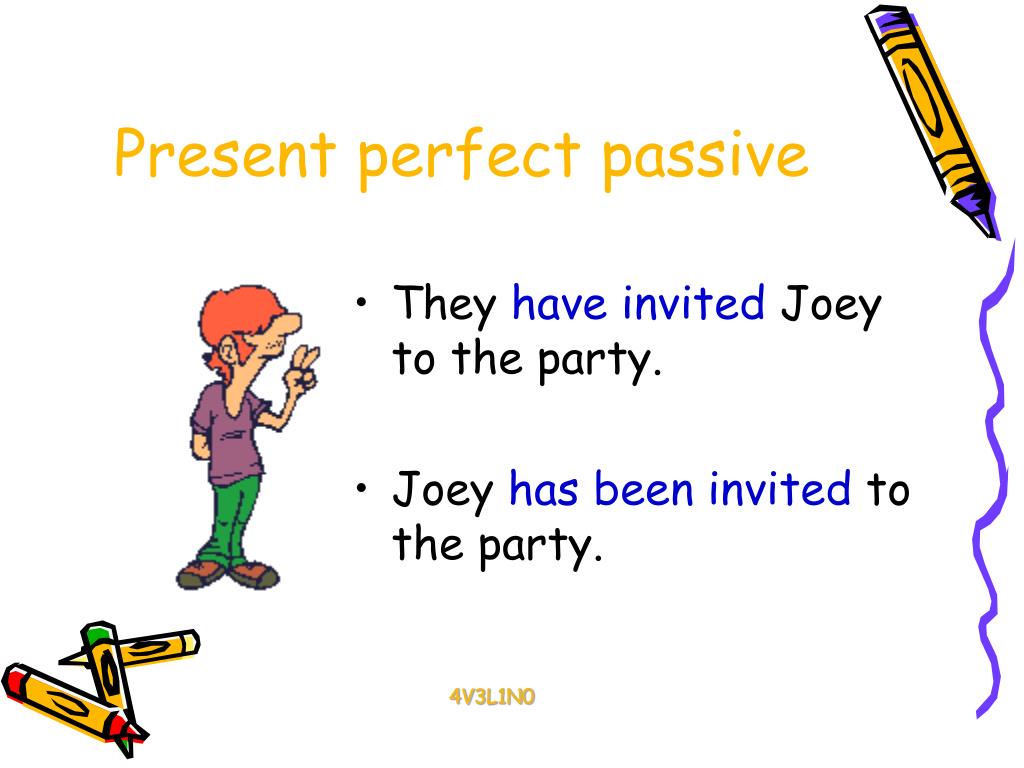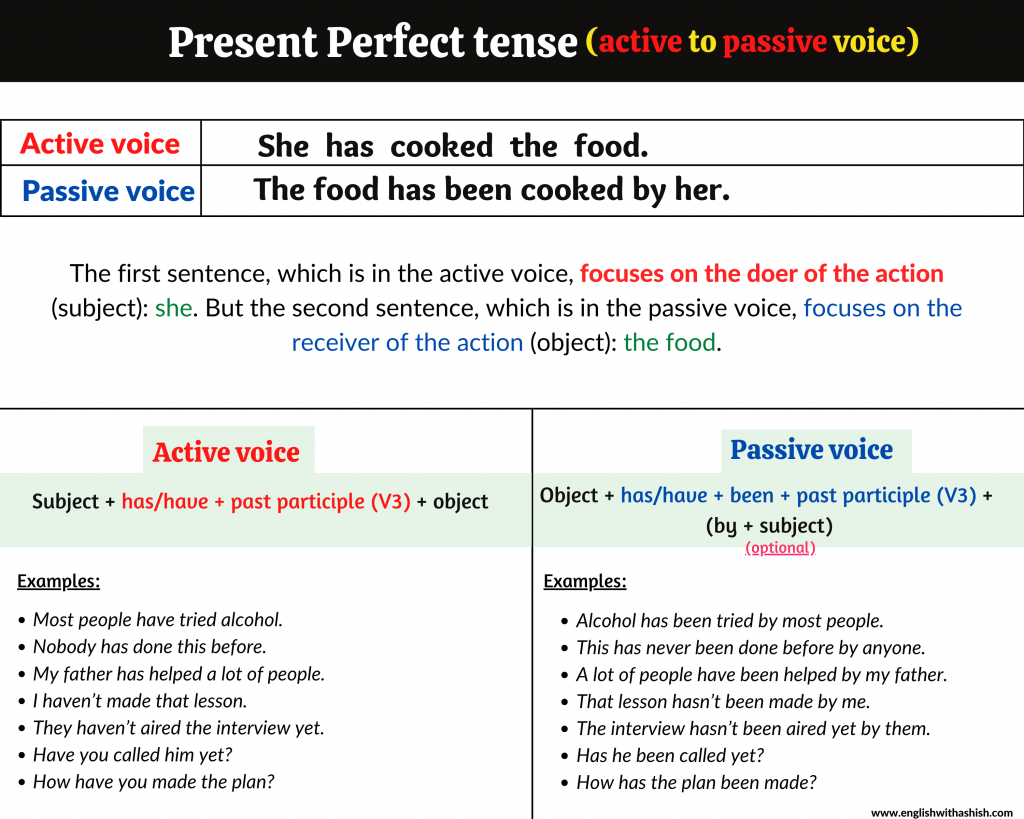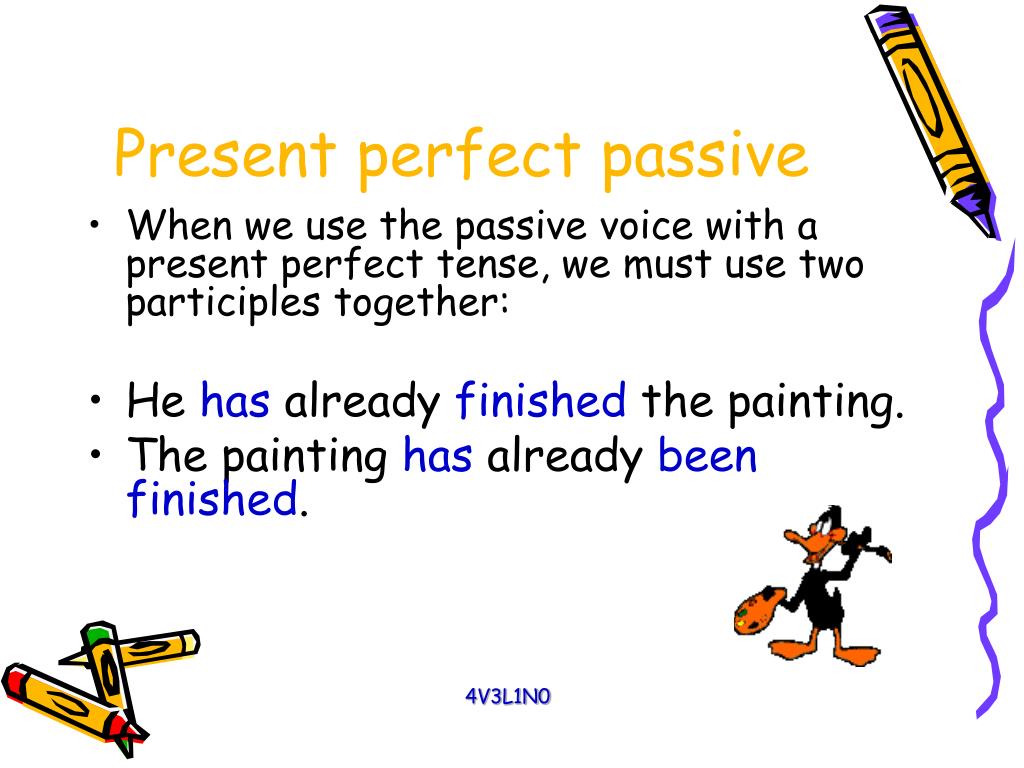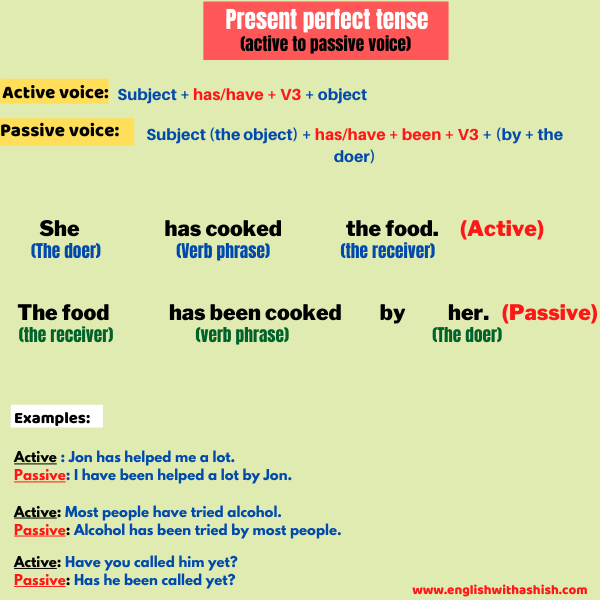Active voice to passive voice in Present perfect tense examples and

Present Perfect Passive English ESL worksheets pdf & doc
The present perfect tense is a verb form used to refer to a past action or situation that has a present consequence. It's typically used to indicate experience up to the present, recent actions, or a change that occurred over a period of time.

The Passive2 (present perfect and f… English ESL worksheets pdf & doc
from English Grammar Today Be + -ed The most common passive structure is be + -ed form: Five million people watch the show every week. (active present simple of watch) The show is watched by five million people every week. (passive present simple of be + -ed form of watch) The table gives examples of the most common forms in the passive.

PPT Passive + Present Perfect developed by 4V3L1N0 PowerPoint
The Structure We create the present perfect by using the verb 'have' and the past participle of a verb. For example, "You have finished." To make questions we invert 'have' and the subject: "Have you finished?" And to make negative forms we add 'not': "You haven't finished."

Present Perfect Tense Passive Voice
The Present Perfect tense denotes an action or state that occurred at an indefinite time in the past (e.g., we have met before) or began in the past and continue to the present time (e.g., I've worked here for five years). These actions have started in the past but continue up to the present moment.

PPT Passive + Present Perfect developed by 4V3L1N0 PowerPoint
How to make the Passive in English We make the passive by putting the verb 'to be' into whatever tense we need and then adding the past participle. For regular verbs, we make the past participle by adding 'ed' to the infinitive. So play becomes played. Click here to learn about irregular verbs . Practise with these exercises Verbs with two objects

Present and Past passive, Present Perfect Simple vs. Past Simple
The Present Perfect tense is one of the most versatile tenses in the English language, but it's mostly used to talk about the status of an action. Click on the Present Perfect tense to learn more about it. Not just the passive voice of the Present Perfect tense, any sentence in the passive voice focuses on the object of the verb.

Present Perfect Active Passive Voice Rules Active Voice and Passive
Students > Solutions > Pre-Intermediate > Grammar > Unit 10 - Exercise 2 - The passive (present perfect and future) Everyday English; Grammar Unit 10 - Exercise 2 - The passive (present perfect and future).

English worksheets Passive Voice.. Present Perfect Tense
The passive voice in the present perfect is used here 'have been made' to put the focus on the 'efforts being made'. No, I haven't. The is a form of ellipsis and is very common in English. 'No, I haven't' is short for, 'no, I haven't heard of the car company'. We use ellipsis to make sentences and questions shorter in.

PASSIVE VOICE (using BY) PRESENT SIMPLE / PAST SIMPLE / PRESENT
1. It is a more indirect and formal way to say it, which is appropriate in a job interview. 2. The speaker wants to make "you" the subject of the sentence (i.e. the most important person). 3. The identity of the person who will inform the candidate is not known. Correct.

Present perfect continuous in the passive voice YouTube
Grammar B1-B2 grammar Passives Passives Do you know how to use the passive voice to change the focus of a sentence? Test what you know with interactive exercises and read the explanation to help you. Look at these examples to see how the passive voice is used. A lot of olive oil is produced in Italy. This book was written by Angela Davis.

Passive voice. Present perfect passi… English ESL worksheets pdf & doc
c. has been taken - Correct - this is the correct form of the present perfect passive. d. was been taken - Wrong - you need to use 'has' instead of 'was'. 3. Your documents. and were posted back to you today. a. have been processed - Correct - this is the correct form of the present perfect passive. b.

Active voice to passive voice in Present perfect tense examples and
The present perfect passive is an English verb form that refers to verbs in the present tense, perfect aspect, indicative mood, and passive voice. Formation of the Present Perfect Passive
FULL GUIDE Present Perfect Passive [2020]
Instantly fix over 250 types of errors that other tools can't find. 97% of Grammarly users report that it is their favorite writing tool.

Using the Passive Voice with Different Tenses ESL Buzz
The present perfect tense is one of the common verb tenses in English, used to show an action that happened in the past that is directly related to the present, such as actions that are still continuing or that indicate a change over time. We cover a complete list of when to use the present perfect tense below.

The second worksheet for practicing the passive voice using the present
Present Perfect Active/Passive. Complete the pairs of sentences with the Present Perfect form, active or passive, of the verbs.

PPT Passive + Present Perfect developed by 4V3L1N0 PowerPoint
The Formula for Present Perfect Tense Passive Voice. To convert a sentence from the present perfect tense active voice to the present perfect tense passive voice, follow this formula: Subject + has/have + been + past participle (3rd form) of the main verb + by + agent (if necessary)